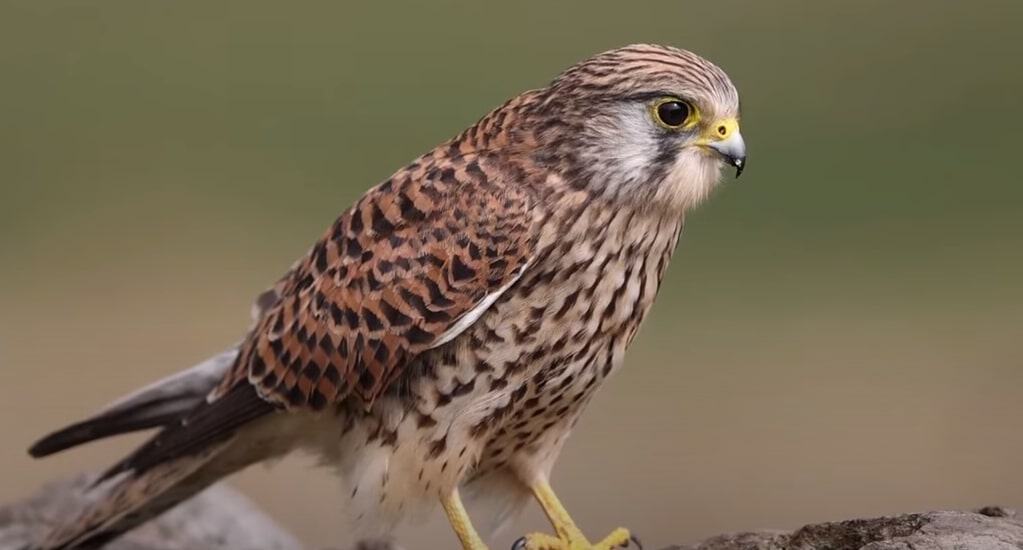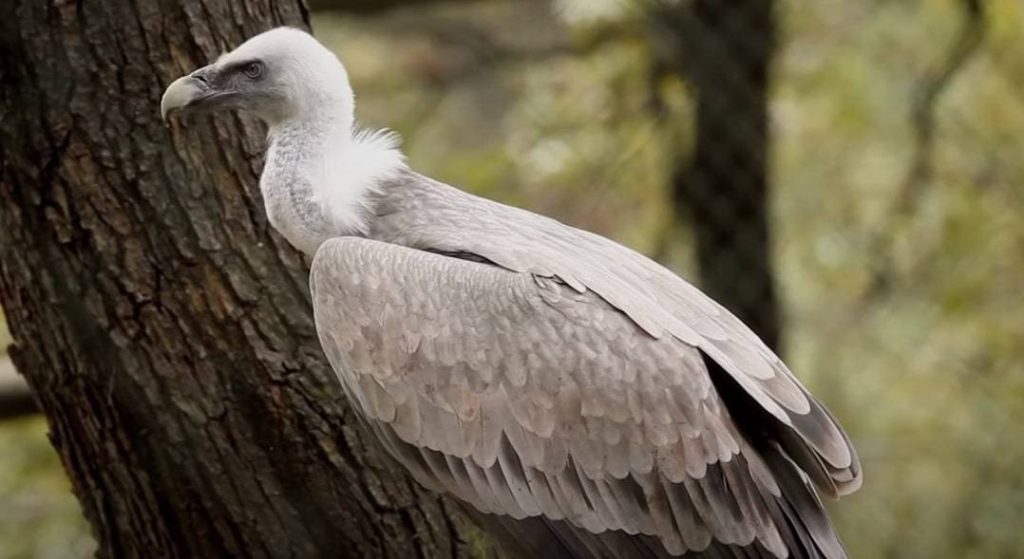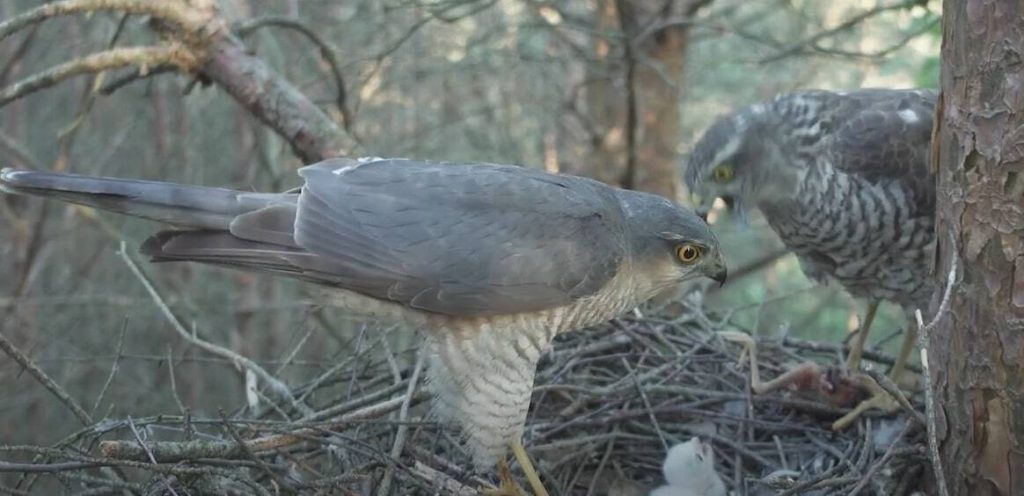Welcome to the ultimate showdown between the top three birds of prey: eagles, hawks, and falcons. From their diverse speeds to their unique traits, I will show you what sets each of these powerful raptors apart.
Join me as I explore the differences between these magnificent apex predators and unravel the mysteries of how they adapt and survive in the wild.
Eagle vs Hawk vs Falcon: Differences
While these birds can seem visually similar, when you observe them in the wild and compare them, you will realize that they are remarkably different. This table offers a glance at how they vary.
| Feature | Eagle | Hawk | Falcon |
| Body Shape & Size | Broad wings, sturdy body | Shorter wings, agile build | Streamlined, pointed wings |
| Behavior | Majestic, solitary hunters | Social, cooperative hunters | Solitary, precision hunters |
| Speed | 30-35 mph (level flight) | Up to 50 mph (in pursuit) | Over 240 mph (in dives) |
| Diet | Varied diet including fish, mammals, and birds | Primarily small mammals and birds | Primarily birds, adept at mid-air strikes |
| Nest | Large eyries atop tall trees or cliffs | Sturdy nests in trees | Nests on high cliffs or tall buildings |
| Location | Various habitats worldwide | Urban and rural settings | Diverse landscapes worldwide |
| Living Time | 20-30 years in the wild | Varies across species, typically 5 to 10 years in the wild | 10-15 years in the wild |
Now that we have a bit of an overview, let’s examine the details, digging deeper into the world of these three predatory birds.
Body Shape & Size

With broad wings and sturdy bodies, they’re built for soaring high above the landscape, scanning for prey with their keen eyesight.
Hawks, on the other hand, are more agile and versatile. They have shorter wings and tails compared to eagles, allowing them to navigate through dense forests and swoop down swiftly to catch their prey.
Depending on the species, hawks can vary greatly in size, ranging from around 10 inches to over 2 feet in length. That’s not surprising because there are around 270 hawk species worldwide.
Falcons are the sleek speedsters of the bird world. With their streamlined bodies and pointed wings, they’re built for speed and precision.
The peregrine falcon, for example, is renowned as the fastest animal on the planet, capable of reaching speeds of over 240 miles per hour when diving for prey! Despite their smaller size than eagles, falcons are formidable hunters, using their agility and incredible speed to outmaneuver their prey.
Each bird has evolved to thrive in different environments and hunting strategies. Eagles dominate the skies with their sheer size and strength, while hawks excel at maneuvering through forests and open landscapes.
Falcons are the ultimate aerial predators, with their unmatched speed and precision. Understanding these differences helps us appreciate birds’ diverse adaptations in the natural world.
Behavior
Now, let’s take a closer look at how these avian titans behave. Eagles are majestic and often solitary birds. They prefer hunting and roosting alone or in small family groups.
Known for their soaring flights, they gracefully ride thermals high above the ground as they search for prey. With their keen eyesight, eagles can spot potential meals from incredible distances, making them efficient hunters.
Hawks are more social creatures, often seen hunting in pairs or small groups. They catch prey using a variety of hunting techniques, from stealthy perches to sudden dives. Known for their impressive aerial displays during courtship rituals, where they perform acrobatic maneuvers to attract mates.
Falcons exhibit different behaviors than eagles and hawks. They are highly specialized hunters who rely on their incredible speed and agility to catch prey mid-flight.
Notorious for their spectacular hunting dives, these birds are solitary hunters and prefer hunting alone rather than in groups. They dive from great heights to strike their targets with astonishing precision.
Understanding these birds’ behaviors gives us insight into their unique adaptations and ecological roles. While eagles soar majestically, hawks hunt cooperatively, and falcons dazzle with their aerial prowess, each species plays a vital role in maintaining the balance of ecosystems around the world.
Speed

The falcons are the undefeated champions of the bird world. Their efficient bodies and powerful wings are built for incredible velocity.
According to Britannica, the Peregrine falcon is the fastest animal on the planet, reaching speeds of up to 240 miles per hour when diving to catch prey—faster than most cars on the highway!
In comparison, eagles and hawks are no slouches either. While they may not match the sheer speed of falcons, they are still impressive flyers.
Bald eagles, for example, can reach speeds of around 30 to 35 miles per hour when flying level, and they can soar even faster when riding thermal updrafts. Similarly, hawks like Cooper’s hawk can achieve speeds of up to 50 miles per hour when in pursuit of prey.
Diet
When it comes to diet, I’ve found that each of these magnificent birds has its preferences. With incredible speed and agility, Falcons prey on other birds.
Peregrine falcons, for instance, target pigeons, ducks, and even other smaller falcons in mid-air strikes. This precision hunting requires exceptional skill and precision.
On the other hand, eagles have a more varied diet. While they also prey on birds, their menu includes fish, mammals like rabbits and squirrels, and even carrion. Bald eagles, famous for their fishing prowess, snatch fish from the water’s surface with their sharp talons, making them master anglers.
Hawks, with their keen eyesight and powerful talons, primarily hunt small mammals like rodents and rabbits. Species like the red-tailed hawk are skilled hunters, often seen perched on fence posts scanning fields for their next meal.
Nest

In my experience, the nesting habits among these birds vary as much as their diets. Falcons are renowned for choosing nest sites like high cliffs or tall buildings in urban areas. For example, I’ve often seen Peregrine falcons nesting on skyscrapers, using the urban landscape to their advantage.
Eagles, with their majestic presence, construct large and sturdy nests called eyries. These eyries are often built atop tall trees or cliffs, providing a haven for their young. Bald eagles, in particular, build massive nests that can weigh up to a ton and measure up to 13 feet deep!
Hawks, while less extravagant in nest construction, are no less meticulous. They often build their nests in trees, utilizing sticks, twigs, and other materials to create a sturdy platform. Red-tailed hawks, for instance, may refurbish old nests or build new ones, depending on the availability of suitable sites.
Observing these birds in their nesting habitats provides a fascinating glimpse into their family life and behaviors. From the bustling cityscape where falcons reign supreme to the tranquil forests where eagles soar, each nest tells a unique story of survival and resilience in the wild.
Location
Navigating the skies, each of these majestic birds has its preferred territory. Falcons, with their keen eyesight and lightning-fast dives, dominate diverse landscapes worldwide. From the towering mountains of the Himalayas to the vast deserts of Africa, falcons carve out their territories with precision.
Eagles, the epitome of strength and grace, soar over a wide range of habitats. Whether it’s the rugged coastlines of North America or the dense rainforests of South America, eagles adapt to various environments with ease, establishing their dominion over the skies.
Hawks, the masters of maneuverability, thrive in both urban and rural settings. From bustling city parks to remote countryside, hawks patrol their territories with a watchful eye, ever vigilant for potential prey.
Red-tailed hawks, for example, can be found throughout North America, from Alaska to Mexico, making them one of the most widespread hawk species on the continent.
I noticed that each location presents unique challenges and opportunities, shaping the behavior and survival strategies of these magnificent creatures.
Living Time
As a bird enthusiast, I always want to preserve these majestic creatures and I’ve often wondered about their natural lifespans.
Falcons, with their dynamic lifestyle, can live anywhere from 10 to 15 years in the wild. However, under human care, they may exceed 20 years, showcasing the profound impact of a stable environment on their longevity.
Eagles, symbols of endurance and resilience, boast impressive lifespans. Depending on the species, eagles in the wild can live between 20 to 30 years, with some individuals surpassing 40 years in captivity. This remarkable longevity allows them to witness generations of change in their habitats.
Hawks, with their adaptable nature, have varying lifespans across species. While some may only live 5 to 10 years in the wild, others, like the red-tailed hawk, can thrive for up to 20 years or more.
Each passing year brings new experiences and challenges for these aerial predators, shaping their place in the natural world.
FAQ
Is a falcon more powerful than an eagle?
No, eagles are generally considered more powerful than falcons due to their larger size and stronger build. Eagles can take down larger prey and have more strength in their talons compared to falcons.
How can you tell a hawk from a falcon?
You can distinguish a hawk from a falcon by observing their body shape and flight style. Hawks typically have broader wings and shorter tails, whereas falcons have longer, pointed wings and slender bodies. Additionally, hawks tend to soar and glide, while falcons are known for their rapid, direct flight with swift wing beats.
Who would win in a fight between a hawk and an eagle?
Generally, eagles are larger and more powerful than hawks, with stronger talons and beaks. Therefore, the eagle would likely have the advantage in a physical confrontation due to its size and strength. However, the specific circumstances of the encounter would ultimately determine the victor.
Final Thoughts
Reflecting on the fascinating world of eagles, hawks, and falcons, I’m struck by the beauty and diversity of nature. Each of these birds, with its unique strengths and abilities, adds richness to our skies.
Whether it’s the majestic flight of eagles, the agile hunting of hawks, or the lightning speed of falcons, they all play a vital role in our ecosystems. Let’s appreciate and safeguard these remarkable creatures, recognizing their importance in maintaining the balance of our natural world.

